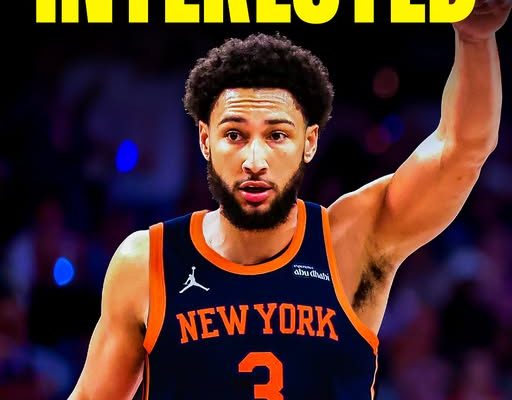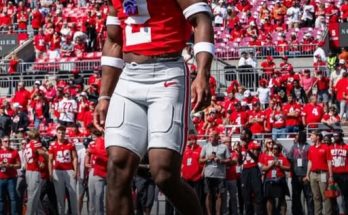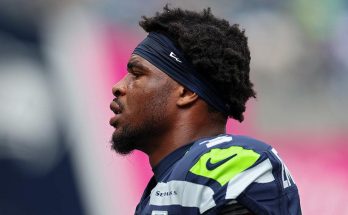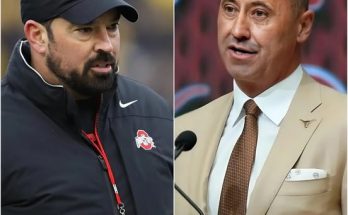The NBA offseason is always full of speculation, movement, and surprises. Teams jockey to fine-tune their rosters, often balancing star power with budget-conscious depth. This summer, one of the more curious developments involves the New York Knicks reportedly showing interest in former All-Star guard/forward Ben Simmons for their final veteran minimum roster spot, as per a report from SNY’s Ian Begley. While on the surface it may seem like a minor transaction or even a head-scratcher, a deeper look reveals that this potential move is layered with strategy, risk, history, and a potential payoff that could reshape a franchise’s identity in subtle but powerful ways.
Ben Simmons is one of the most polarizing players in modern basketball. Once heralded as the next great point-forward after being selected No. 1 overall in the 2016 NBA Draft by the Philadelphia 76ers, Simmons brought an unprecedented mix of size, athleticism, and passing vision to the league. Standing 6-foot-10 with elite court vision and lateral quickness, Simmons earned comparisons to Magic Johnson early in his career. And in his initial years, those comparisons didn’t seem completely outlandish. He won Rookie of the Year in 2018, was named to three consecutive All-Star teams from 2019 to 2021, made two All-Defensive First Teams, and was widely considered a cornerstone of the “Process” in Philadelphia.
However, the Ben Simmons story is as much about what didn’t happen as what did. The former LSU standout’s Achilles’ heel—his unwillingness or inability to develop a consistent jump shot—eventually caught up with him. His performance in the 2021 playoffs, particularly in the Eastern Conference Semifinals against the Atlanta Hawks, became a tipping point. Simmons passed up wide-open shots, seemed to retreat from offensive responsibility, and ultimately drew sharp criticism from teammates, coaches, and the media alike. What followed was a messy standoff with the Sixers, a trade to Brooklyn, recurring injuries, and an ongoing battle with mental health and confidence. At just 28 years old, Simmons finds himself at a crossroads that would’ve seemed impossible three years ago: fighting for a roster spot on a veteran minimum contract.
The New York Knicks’ reported interest in Simmons is both surprising and understandable. Surprising, because Simmons’ value has plummeted to the point where teams with real playoff aspirations are viewing him as a potential low-cost flyer. Understandable, because the Knicks are in an interesting position as a franchise. After a resurgent 2023-24 campaign that saw them return to the playoffs with one of the NBA’s most balanced rosters, the Knicks are a team on the cusp. They’ve built a winning culture under head coach Tom Thibodeau, reestablished Madison Square Garden as a tough place to play, and boast a solid core featuring Jalen Brunson, Julius Randle, OG Anunoby, and newly-acquired Mikal Bridges. What they lack, arguably, is a true X-factor coming off the bench—someone who, if healthy and bought in, could elevate their defensive ceiling while offering playmaking versatility.
This is where Simmons comes in. On a veteran minimum deal, the financial risk is low. If he flames out or can’t stay healthy, the Knicks can easily cut ties. But if Simmons buys into a role, accepts being a secondary playmaker or defensive specialist off the bench, and stays healthy, the Knicks may have just pulled off one of the offseason’s best value acquisitions.
Simmons still possesses elite defensive instincts. Despite his struggles on offense, he was among the league leaders in defensive win shares and defensive rating during his peak years. He has the size to guard power forwards and centers, the lateral movement to contain guards on the perimeter, and the IQ to rotate and switch effectively in a team defense. For a coach like Thibodeau, who prides himself on gritty, connected defensive play, Simmons is a tantalizing tool. He could serve as a Swiss Army knife of sorts—guarding the opponent’s best scorer, initiating transition offense, and relieving ball-handling pressure from Brunson and others.
But it’s not just about what Simmons brings on paper. The bigger question is psychological. Can Simmons re-integrate himself into an NBA locker room without the burden of being “the guy”? Can he rediscover the joy of basketball, the confidence in his body, and the rhythm needed to be an effective rotation player? Recent footage from offseason workouts suggests Simmons is healthy and active, working on his conditioning and mobility. However, offseason gym clips are far from game performance. What teams need to see—and what the Knicks would have to believe—is that Simmons has mentally turned a corner. That he’s prepared to fight for minutes, accept a reduced role, and reframe his identity as a role player rather than a franchise star.
One of the key advantages for Simmons in New York could be the environment. Unlike Philadelphia or Brooklyn, where he was the focal point of either expectations or controversy, the Knicks have an established identity and pecking order. Jalen Brunson is the unchallenged leader of the team. Bridges and Anunoby are two-way wings who operate efficiently without needing the ball constantly. Julius Randle is a volume scorer and rebounder. Even Josh Hart, Isaiah Hartenstein (if re-signed), and Donte DiVincenzo have well-defined roles. Simmons would not be asked to carry the offensive load, take game-winning shots, or even play 30 minutes a night. He could come in, defend, push the pace, and move the ball. If that kind of simplicity appeals to him, New York could be the perfect reboot.
There’s also the added benefit of New York’s infrastructure. The Knicks’ medical staff has gained praise in recent years for managing player workloads and recovery. Their player development group has quietly helped guys like Immanuel Quickley, Quentin Grimes, and Miles McBride make noticeable leaps. And in terms of media exposure, while New York is the biggest market in the world, Simmons’ narrative fatigue may ironically work in his favor here. He wouldn’t be the story—Brunson, Randle, and the pursuit of a Finals appearance would. Simmons could finally operate in the background, out of the glare, and that might be exactly what he needs.
However, this wouldn’t be without its complications. For one, the Knicks are a team that emphasizes physical toughness and high-effort play. Thibodeau doesn’t often tolerate defensive lapses or low-energy sequences, and players that don’t buy into his system usually find themselves out of the rotation quickly. Simmons’ perceived apathy on the court, especially over the last two seasons, would have to be completely transformed. That will take more than a good training camp—it will take sustained effort, humility, and buy-in over the course of the season. Whether Simmons is capable of that remains a mystery.
Additionally, the Knicks are not operating in a vacuum. They are reportedly still in the market for a backup center or another shooting wing, depending on how the rest of the offseason shapes out. Using their final veteran minimum slot on Simmons could close off other avenues. So it’s not just about Simmons’ upside—it’s about opportunity cost. If the front office believes Simmons is a better bet than a seasoned rim protector or a 3-and-D specialist, then they’re gambling on more than just talent—they’re betting on transformation.
It’s also worth discussing the locker room dynamics. The Knicks’ culture has been one of their strongest assets lately. Team chemistry, unity, and a shared underdog mentality have carried them through some tough series. Bringing in a player with a reputation for withdrawing or struggling with pressure could be seen as disruptive. Then again, winning cultures are often the best rehabilitators. Just ask Derrick Rose, who had a revival of sorts under Thibodeau in New York after years of injuries and setbacks. Maybe the same can happen for Simmons.
From a basketball standpoint, there are several ways Simmons could be deployed. As a point-forward off the bench, he could run the second unit and push tempo. Surrounded by shooters like DiVincenzo and Grimes, Simmons’ lack of shooting wouldn’t be as glaring. He could also be used in a small-ball lineup with Bridges at the 4 and Randle at the 5, offering switchability and transition defense. Or he could operate as a defensive closer, coming in for key possessions late in games to get a stop. In all of these roles, Simmons wouldn’t be asked to shoot from deep or isolate offensively—he’d be tasked with defending, rebounding, and making the next pass.
What makes the potential move so fascinating is the duality of risk and reward. Simmons’ career arc has been one of the sharpest declines in recent memory. From All-Star to outcast in just a few seasons, largely due to a combination of mental, physical, and circumstantial factors. Yet the talent—at least in flashes—is still there. And for a team like the Knicks, who don’t have many holes but also don’t have the margin for error that a superteam might, adding a low-risk, high-upside player like Simmons could be a masterstroke.
It’s impossible to say whether this deal will happen. There are still logistical details, medical evaluations, and internal discussions that will shape the Knicks’ decision. But the mere fact that they are considering Simmons speaks volumes about how far his career has fallen—and yet, how much faith some around the league still have in his abilities. If he signs, it will be one of the most watched veteran minimum experiments in the NBA this season. If he plays well, it could revive his career and provide the Knicks with a valuable rotation piece. If he doesn’t, the cost is minimal, and the Knicks move on.
Ultimately, the story of Ben Simmons and the New York Knicks, if it comes to pass, will not be about stats or accolades. It will be about reinvention, trust, and the ability to adapt. Sometimes, all a player needs is the right environment, the right expectations, and the right moment to rewrite their story. For Simmons, New York could be that place. And for the Knicks, the reward might just outweigh the risk.



